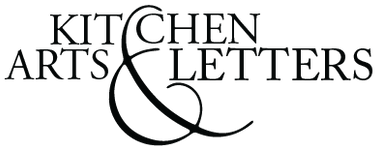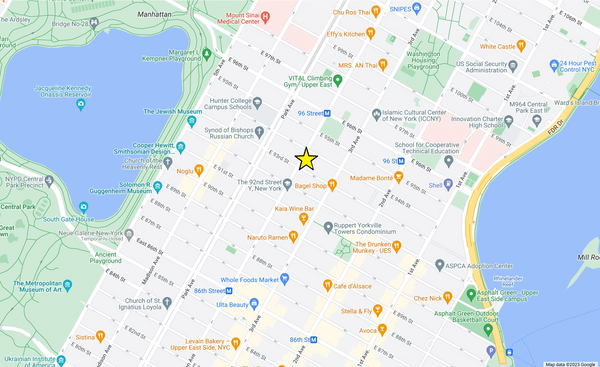Cindy Pawlcyn's 5 Favorite Books
Mar 28, 2025
Cindy Pawlcyn’s 5 Favorite Books
“This is so fun. It’s so exciting. But oh, it’s so hard to do! Maybe that’s why I like it.”
When I ask Cindy Pawlcyn to name her five favorite books, she protests. "I love all my books, and some more than others, but I do love them all," she says. "But I understand how you can't have every book that I love; it'd be every book in the library. Who’d want to read all that?"
Still, she takes on the challenge. The final five change several times before we sit down to talk, but she finds clarity in choosing books rather than authors. "Who could choose just one Jane Grigson book?"

Pawlcyn, the pioneering chef behind Napa Valley’s Mustards Grill, has been collecting books since childhood. At one point, she had thousands—until a wildfire in 2020 destroyed her home and her entire collection. She and her husband, John Watanabe, fled in their pajamas, saving only their dog, Hiro.
In the aftermath, generous people from all over offered her books from their own shelves. She has been thoughtfully rebuilding her collection ever since—always looking for something new, something worthwhile.
Here are the five books she chose:

Japanese Cooking: A Simple Art by Shizuo Tsuji
"I've always loved this book. I don’t know why in 1981 I bought a book on how to cook Japanese food. There was only one Japanese restaurant in Minneapolis [where Pawlcyn grew up] at the time. But I started cooking from it."
She holds up a well-worn copy. "This is the only book I have from my original collection."
When she married John, he had his own copy, so she gave hers to her stepson, Peter. After the fire, he sent it back. It was filled with notes she had written when she was a "punk chef."
"Look," she says, pointing at one note. "I didn’t like dashi! I love dashi now, but then I wrote 'Yuck!' by it. But in 1981, what did I know about dashi? I probably overcooked it, or it was too smoky, or too kombu-y. I did something wrong that first time, but I learned."
She still refers to this book often. "I probably used it two weeks ago, if not more recently. I check it before any of my other Japanese books. But I admit—I’m not great at following recipes. I embellish them. I change them. Sometimes it's for a mood I’m in, sometimes it's because I don’t have an ingredient. I see how he would do it, then I do it, and then I kind of combine things."
Saving the Seasons by Kevin West
"I don't know this man, but I love him. I just make things from it all the time. His recipes always work, and you can use them as a springboard."
She flips through her copy, filled with notes. "Like here," she says, reading aloud. "Excellent, made with a mixture of apples."
Then she finds another: "Didn't work, must sit longer, it was too syrupy, so then I redid it again, and then I put excellent."
"Something about this book—even if something doesn’t work out right, I try it again. Whereas with some books, I’ll try two or three recipes, they don’t work, and I’m done."
She gestures to the margins. "Cut fruit smaller, or added extra water, got six jars."
"I use it all the time because I love gardening and going to the farmers’ market for things I don’t grow. This book is beautiful."
Cross Creek Cookery by Marjorie Kinnan Rawlings
"Florida was someplace my parents always went. We lived in Minnesota. They were snowbirds. My mom loved this book. I had her copy, but that burned up. She didn’t have a lot of cookbooks, so the fact that she had this one meant something. I was glad to replace it."
She flips through the pages. "This one speaks of Florida to me. Not current Florida, but that piece of time when my mom and dad were going there, and even before, since it came out in the 1940s."
She lingers over a recipe. "Like the chile con carne. Allspice in chile con carne? It seems funny, the things we used to do. Maybe they just didn’t have cumin then?"
Another page sparks a memory. "And I love these cornmeal pancakes—the thin ones. I look at this and see that my mom got her avocado salad recipe from it, but she changed it, too. Added butter lettuce and grapefruit segments. It was delicious. I think of her when I see this."
The Favorite Recipes of the Great Women Chefs of France by Madeline Peter
"I think I got this as soon as it came out in 1979. I spent so much of my young life looking for books that proved there were women chefs. I was told I couldn’t be a cook; I couldn’t be a chef. I could work in a bake shop or the pantry. But they said I couldn’t lift stock pots, and I couldn’t do this, and I couldn’t do that."
She shrugs. "Well, I did it. And it’s probably why my shoulder is killing me and my knee had to be replaced. But that happens to all chefs—not because I’m a woman."
She flips through the book. "I miss the copy that burned up because it had all kinds of notes in it too. I had made quite a few of the recipes in this book. I would just hold this book and go, see! There's a woman chef. There's a woman chef! I can do it. I can get through all the crap that I’ve been through."
She taps the cover. "And look, the woman on the front—Olympe. Just her picture was so inspiring to me. They just published a new book about her. She had no formal training, but she had a good aesthetic, and she still has that same spunk."
This book is out-of-print. You can email op@kitchenartsandletters.com to let us know you would like to be notified when we have a copy available.
Adventures of a Bacon Curer by Maynard Davies
(And Secrets of a Bacon Curer, which Pawlcyn slides onto the table as we talk.)
"Maynard started as a tradesman, an old-style English butcher. And I started from trade school. And it doesn’t hurt that he was dyslexic, and I am dyslexic."
She admires his craftsmanship. "He couldn’t easily write down recipes, but he was very into consistency and making things exactly right. And I love that he writes about how he did that. Because he tells you how he kept working. It starts out with his adventures and it goes into his secrets, and these two books really should have been one, so I’m talking about them that way."
She pauses, thoughtful. "He was somebody I would have liked to have met. I have a lot of respect for him—on the trade level, on the craft level, on the art form. Maynard proves that anybody can do it if you want to work hard. That’s a message I think would encourage a lot of people."
She leans back. "I love curing meat. I love butchery, I love fish butchery, I love prepping artichokes. I love all that. That’s part of what drove me into being a chef. It’s making people happy and making food, but the actual art of making food is what I really love."
She taps the book again. "That’s what books are supposed to do for you. They’re not just answering questions. They’re making you think. They’re making you think about, well, what should we do? They’re trying to challenge you."

About the 5 Favorite Books posts:
Each month, we invite one of our thoughtful, well-read customers to share five books that matter to them. Their selections might be practical, nostalgic, inspirational, deeply personal—or some unexpected blend of all the above.
We're fascinated by what draws people to certain books. A single perspective can cast a new light on a title we thought we knew. We learn from our customers every day, and this series is our way of sharing that insight with the wider community—one bookshelf at a time.
Some of the books they chose may be out-of-print. If you'd like us to find you a copy, please email us at op@kitchenartsandletters.com.



10 comments
Please let me do one of these?!!!
Only five!?
I just lost almost all of my cookbooks (20 years of collecting) to the fire in the pacific palisades. This is such a great thing to do and such a great person to feature for the first round, it really speaks to how to rebuild and cherish not just the books but the memories in them. Thank you